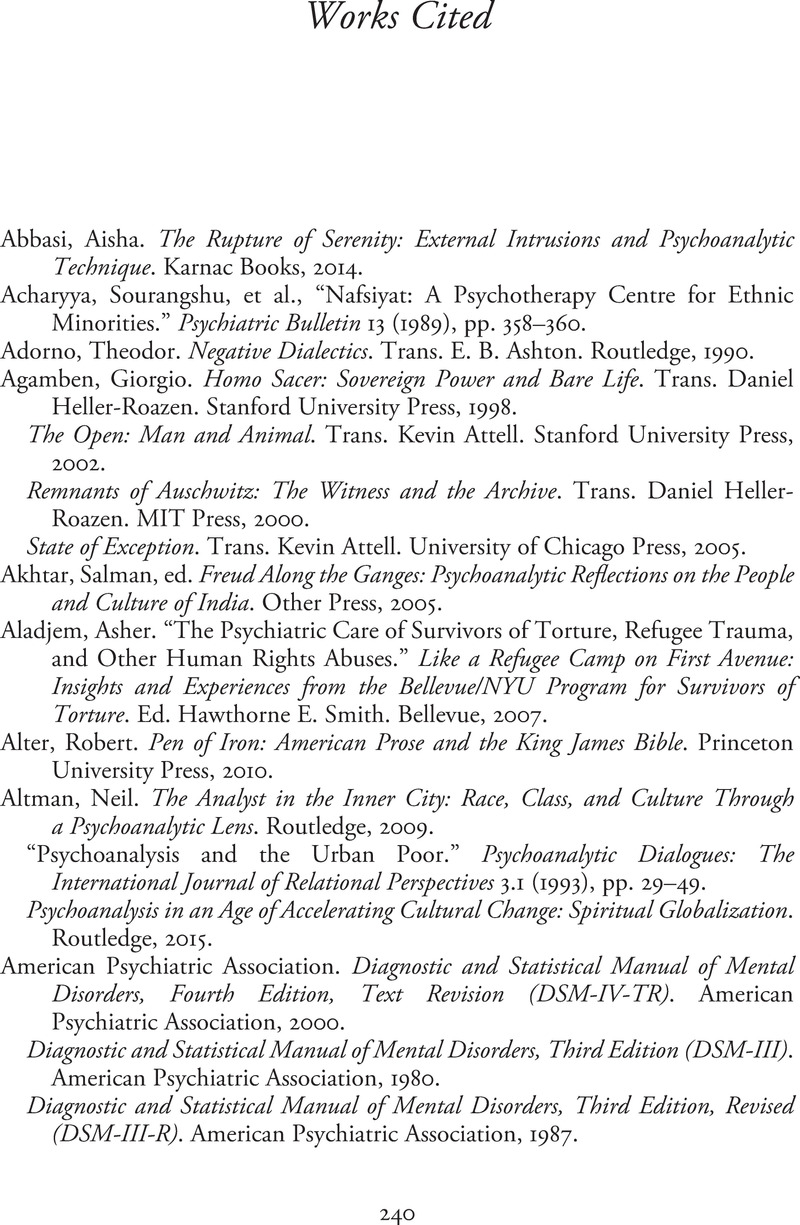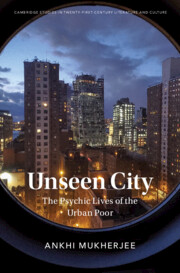Book contents
- Unseen City
- Cambridge Studies in Twenty-First-Century Literature and Culture
- Unseen City
- Copyright page
- Dedication
- Contents
- Figures
- Acknowledgments
- Introduction: “The Poverty of Philosophy” – A Critique of Psychoanalytic Knowledge and Power
- Part I London
- Part II Mumbai
- Part III New York
- Notes
- Works Cited
- Index
- References
Works Cited
Published online by Cambridge University Press: 19 November 2021
- Unseen City
- Cambridge Studies in Twenty-First-Century Literature and Culture
- Unseen City
- Copyright page
- Dedication
- Contents
- Figures
- Acknowledgments
- Introduction: “The Poverty of Philosophy” – A Critique of Psychoanalytic Knowledge and Power
- Part I London
- Part II Mumbai
- Part III New York
- Notes
- Works Cited
- Index
- References
Summary

- Type
- Chapter
- Information
- Unseen CityThe Psychic Lives of the Urban Poor, pp. 240 - 252Publisher: Cambridge University PressPrint publication year: 2021



